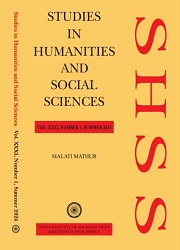An Indigenous History of Traditional Naga Food Resilience during British Colonial Battles
Keywords:
Naga, indigenous, reconstruction, colonial violence, people storyAbstract
Postcolonial Indigenous writers, according to Boehmer (2005), believe that writing back is a significant step towards ‘historical reconstruction’ that can reconcile the precolonial indigenous identity and tradition of the past with the present. However, reconstruction of such history is fraught with several layers of cultural silencing. Therefore, it needs unique methodologies because official forms of historical archives or written records do not exist. The Naga territory, according to Wouters (2018), was the victim of colonial geopolitical objectification. However, the only authoritative work on Naga history, according to Sanyü (2023) was offered by a British administrator in Naga Hills, J.H. Hutton. The Naga ‘people stories’ are potent windows to Naga lived history and indigenous Naga knowledge systems that have endured the whitewashing of dominant historical representations of the Naga people. Kire’s novels Sky is My Father: A Naga Village Remembered (2018) and A Respectable Woman (2019 a), based on ‘people stories,’ make visible the colonial food crisis projects during the Battle of Khonoma (1879) and the Battle of Kohima (1944) respectively. They also make visible the Naga food resilience systems that helped the Naga people to prevent community starvation when India was hit by anthropogenic famines due to British colonial food policies. The Naga people’s lived history of colonial
resistance and indigenous food peace has undergone several layers of invisibilization: absence of written records, cultural flattening of indigenous languages and culture. Therefore, this study reconstructs Naga indigenous historical narratives of colonial India vis-à-vis pre-colonial Naga food ways during the Battle of Khonoma (1879) and the Battle of Kohima (1944) by making a parallel reading of Kire’s novels and available historical documentations of the two war situationsWalking the Roadless Road: Exploring the Tribes of Nagaland (Kire 2019 b) and A History of Nagas and Nagaland: Dynamics of Oral Tradition in Village Formation (Sanyü 2023) – by Indigenous Naga historians. In so doing, it situates the indigenousNaga foodsovereignty systems of ‘staying alive’ (a word derived from Shiva 2010) in the present-day dystopia of food uncertainty.


